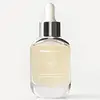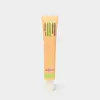What's inside
What's inside
 Key Ingredients
Key Ingredients

 Benefits
Benefits

 Concerns
Concerns

 Ingredients Side-by-side
Ingredients Side-by-side

Water
Skin ConditioningAscorbyl Glucoside
AntioxidantPentylene Glycol
Skin ConditioningGlycerin
HumectantSodium Citrate
BufferingSodium Hydroxide
BufferingXanthan Gum
EmulsifyingParfum
MaskingCitric Acid
BufferingBiosaccharide Gum-1
HumectantSodium Levulinate
Skin ConditioningLimonene
PerfumingGlyceryl Caprylate
EmollientSodium Anisate
AntimicrobialHydroxycitronellal
PerfumingLinalool
PerfumingBenzyl Alcohol
PerfumingWater
Skin ConditioningGlycerin
HumectantNiacinamide
SmoothingDistarch Phosphate
AbsorbentPropanediol
SolventOleic Acid
EmollientSclerotium Gum
Emulsion StabilisingSorbitan Olivate
EmulsifyingPunica Granatum Seed Oil
EmollientAscorbyl Palmitate
AntioxidantXylityl Sesquicaprylate
AntimicrobialCetearyl Olivate
Sodium Benzoate
MaskingDecyl Glucoside
CleansingLinoleic Acid
CleansingPotassium Sorbate
PreservativeBisabolol
MaskingLauryl Glucoside
CleansingTocopherol
AntioxidantHyaluronic Acid
HumectantAminomethyl Propanol
BufferingIron Oxides
Anhydroxylitol
HumectantAlgin
MaskingGlyceryl Undecylenate
EmollientTocopheryl Acetate
AntioxidantBentonite
AbsorbentGlyceryl Caprylate
EmollientCaffeine
Skin ConditioningMica
Cosmetic ColorantCI 77163
Cosmetic ColorantCaprylic/Capric Triglyceride
MaskingCalcium Citrate
BufferingCitric Acid
BufferingSodium Lauroyl Lactylate
EmulsifyingResveratrol
AntioxidantSodium Metabisulfite
AntioxidantWater, Glycerin, Niacinamide, Distarch Phosphate, Propanediol, Oleic Acid, Sclerotium Gum, Sorbitan Olivate, Punica Granatum Seed Oil, Ascorbyl Palmitate, Xylityl Sesquicaprylate, Cetearyl Olivate, Sodium Benzoate, Decyl Glucoside, Linoleic Acid, Potassium Sorbate, Bisabolol, Lauryl Glucoside, Tocopherol, Hyaluronic Acid, Aminomethyl Propanol, Iron Oxides, Anhydroxylitol, Algin, Glyceryl Undecylenate, Tocopheryl Acetate, Bentonite, Glyceryl Caprylate, Caffeine, Mica, CI 77163, Caprylic/Capric Triglyceride, Calcium Citrate, Citric Acid, Sodium Lauroyl Lactylate, Resveratrol, Sodium Metabisulfite
Ingredients Explained
These ingredients are found in both products.
Ingredients higher up in an ingredient list are typically present in a larger amount.
Citric Acid is an alpha hydroxy acid (AHA) naturally found in citrus fruits like oranges, lemons, and limes.
Like other AHAs, citric acid can exfoliate skin by breaking down the bonds that hold dead skin cells together. This helps reveal smoother and brighter skin underneath.
However, this exfoliating effect only happens at high concentrations (20%) which can be hard to find in cosmetic products.
Due to this, citric acid is usually included in small amounts as a pH adjuster. This helps keep products slightly more acidic and compatible with skin's natural pH.
In skincare formulas, citric acid can:
While it can provide some skin benefits, research shows lactic acid and glycolic acid are generally more effective and less irritating exfoliants.
Most citric acid used in skincare today is made by fermenting sugars (usually from molasses). This synthetic version is identical to the natural citrus form but easier to stabilize and use in formulations.
Read more about some other popular AHA's here:
Learn more about Citric AcidGlycerin is already naturally found in your skin. It helps moisturize and protect your skin.
A study from 2016 found glycerin to be more effective as a humectant than AHAs and hyaluronic acid.
As a humectant, it helps the skin stay hydrated by pulling moisture to your skin. The low molecular weight of glycerin allows it to pull moisture into the deeper layers of your skin.
Hydrated skin improves your skin barrier; Your skin barrier helps protect against irritants and bacteria.
Glycerin has also been found to have antimicrobial and antiviral properties. Due to these properties, glycerin is often used in wound and burn treatments.
In cosmetics, glycerin is usually derived from plants such as soybean or palm. However, it can also be sourced from animals, such as tallow or animal fat.
This ingredient is organic, colorless, odorless, and non-toxic.
Glycerin is the name for this ingredient in American English. British English uses Glycerol/Glycerine.
Learn more about GlycerinGlyceryl Caprylate comes from glycerin and caprylic acid, a fatty acid from coconut. It has emollient and emulsifier properties.
As an emollient, it helps hydrate your skin. Emollients work by creating a barrier on your skin to trap moisture in, helping to keep your skin soft and smooth.
On the other hand, emulsifiers prevent ingredients (such as oil and water) from separating.
Learn more about Glyceryl CaprylateWater. It's the most common cosmetic ingredient of all. You'll usually see it at the top of ingredient lists, meaning that it makes up the largest part of the product.
So why is it so popular? Water most often acts as a solvent - this means that it helps dissolve other ingredients into the formulation.
You'll also recognize water as that liquid we all need to stay alive. If you see this, drink a glass of water. Stay hydrated!
Learn more about Water